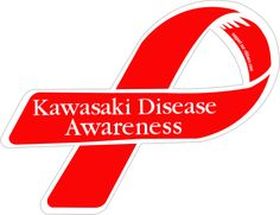 Kawasaki disease affects 4,000 children in the United States each year. Kawasaki disease is a rare autoimmune condition that causes inflammation in the blood vessels. This disease is known to affect only children. The disease was first discovered in Japan, and is diagnosed in boys more than girls. The onset of Kawasaki disease occurs in children younger than 5 years of age. While the root cause of Kawasaki disease is not yet known, experts believe that it is an autoimmune disorder. Kawasaki disease is known to affect the lymph nodes, blood vessel walls, heart, and mucous membranes. Symptoms of Kawasaki disease -Fever of 102 degrees that lasts more than 5 days -Swollen hands and feet -Bloodshot eyes -Joint pain -Peeling skin on the hands, feet, and in the genital area -Swollen lymph nodes -Nausea -Coughing -Diarrhea -Runny nose Testing for Kawasaki disease Doctors will usually diagnose the symptoms the child is experiencing. Doctors may order tests for further evaluation of the child. Some of these tests include: -Blood tests -Chest X-ray -C-reactive protein -Echocardiogram -Electrocardiogram -Urinalysis Treatment for Kawasaki disease Children with Kawasaki disease require hospitalization. Treatment would have to be started right away in order to prevent complications in the heart and arteries. Your child will be hooked up to an IV and will be given gamma globulin at high doses. Most children experience improvement within 24 hours. It is important to note that 1 in 4 children may develop problems with their coronary arteries, even after treatment. Most children do recover from this disease when it is caught early. Further research is being done in order to better understand and treat this disease.
0 Comments
Your comment will be posted after it is approved.
Leave a Reply. |
Archives
|
©2017-2024


 RSS Feed
RSS Feed
